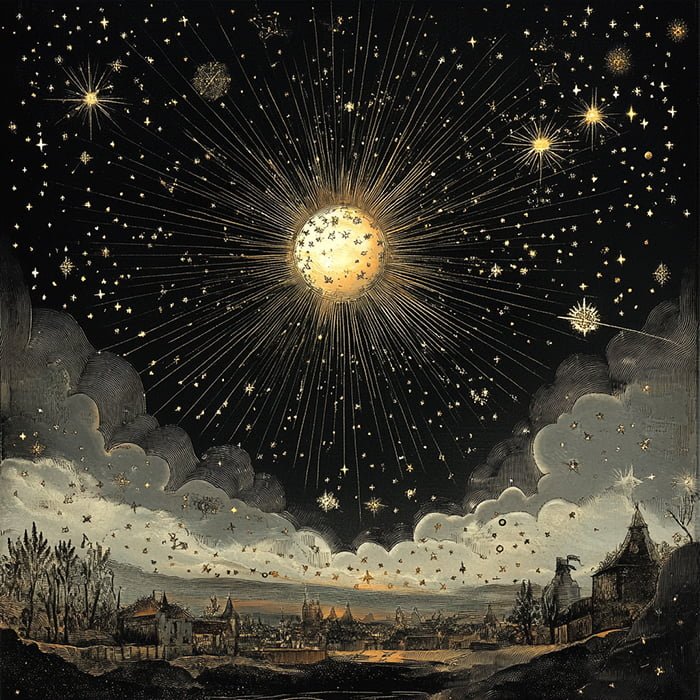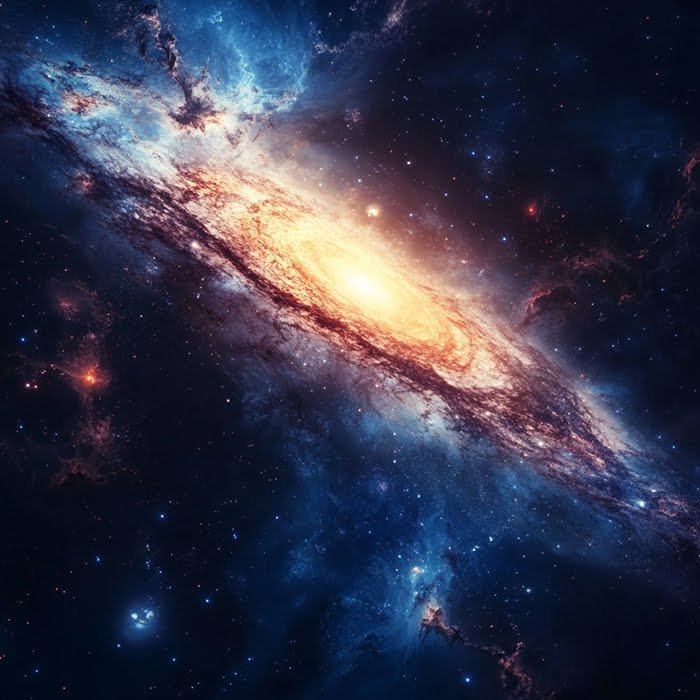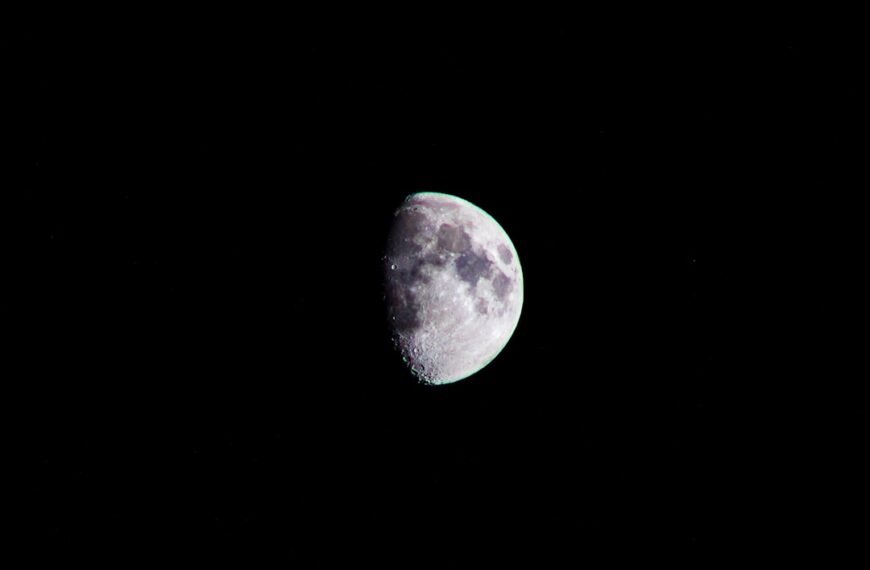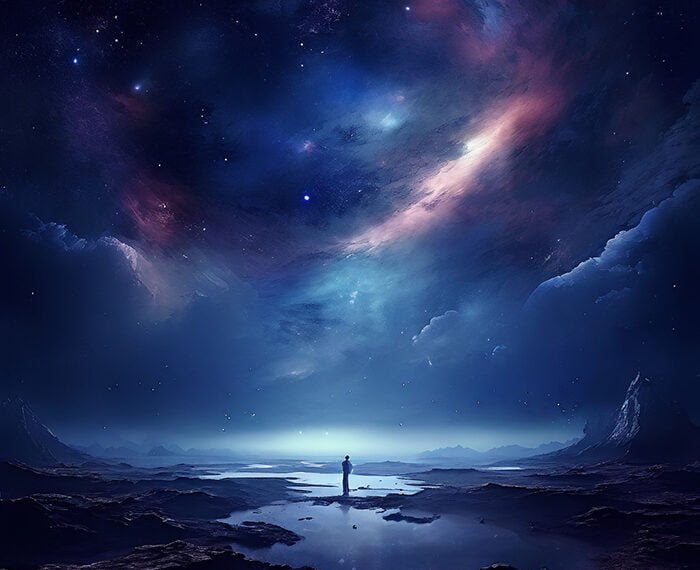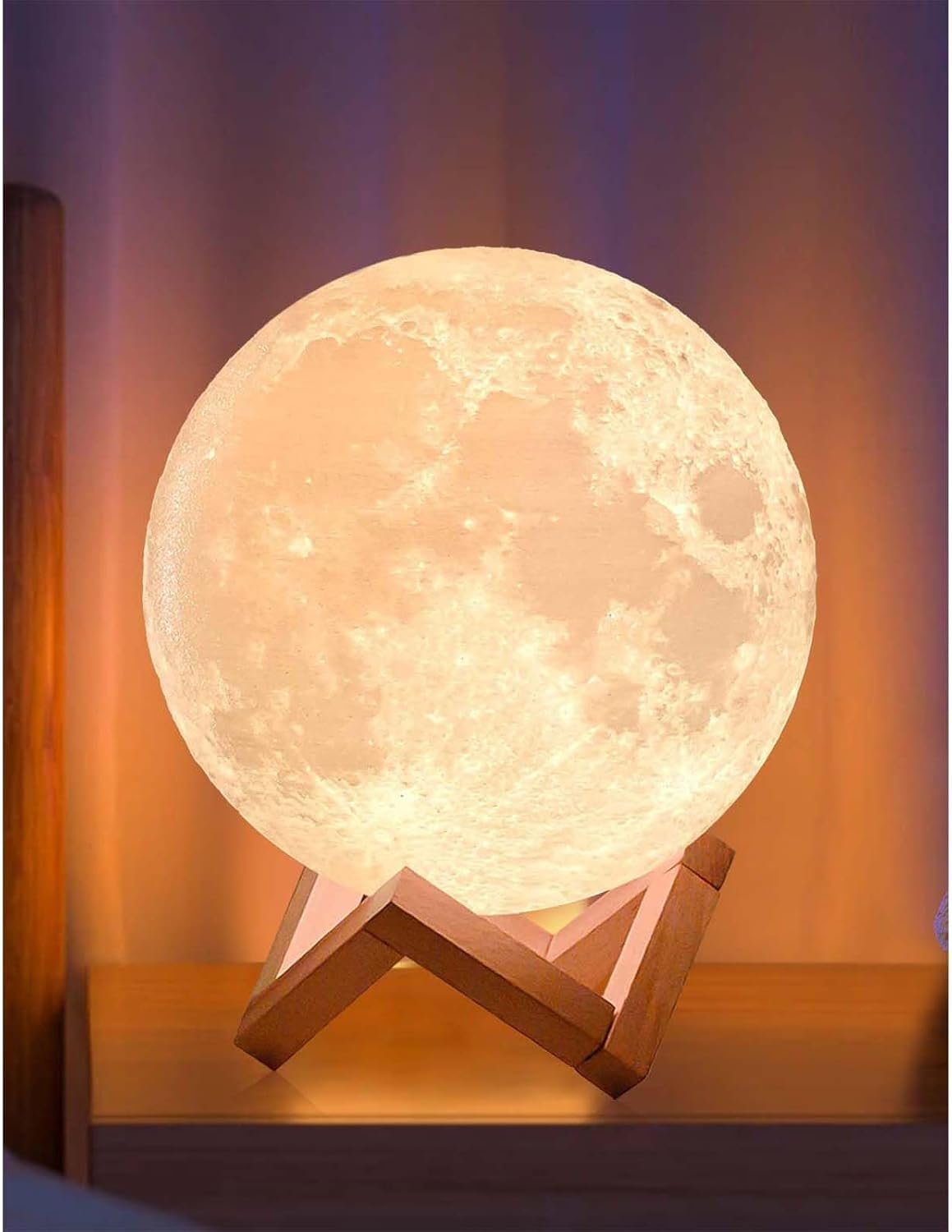Stars in the night sky fascinate us, symbolizing hope and guidance while revealing cosmic wonders through their formation, lifecycle, and cultural impact.
Key Takeaways 📝
- Stars, formed in vast molecular clouds, are not just celestial bodies but also symbolize hope and guidance throughout history.
- The universe contains an estimated one septillion stars, highlighting their abundance and importance in cosmic evolution and the formation of elements essential for life.
- While stars are scientific phenomena, they also embody deep cultural significance, often representing aspiration and the quest for meaning in literature and art.
- Stars serve as powerful metaphors in poetry, symbolizing personal growth, longing, and the mysteries of existence, bridging the physical and metaphysical realms.
- Ultimately, the dual nature of stars—both as scientific wonders and rich symbols—encourages us to reflect on our place in the universe and inspires an endless curiosity about the cosmos.
“Stars in the Night Sky” have fascinated humanity for millennia, serving as both literal and metaphorical beacons illuminating our path through the cosmos and our inner worlds. This exploration delves into the dual nature of stars: their scientific properties, rooted in the physical universe, and their rich symbolic significance in literature and culture. By examining these facets, we gain a deeper appreciation of how stars captivate and inspire us.
Scientific Understanding of Stars
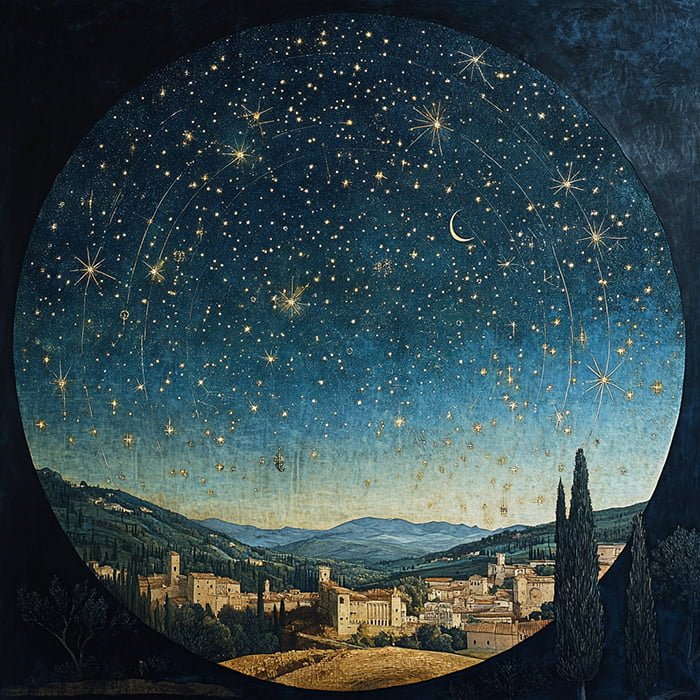
Formation and Lifecycle
Stars are immense, luminous spheres of plasma, primarily composed of hydrogen and helium. They form in dense regions within molecular clouds, often referred to as ‘stellar nurseries’ or ‘star-forming regions.’ The process begins when these clouds collapse under gravity, leading to the birth of stars. Most stars form in clusters rather than in isolation, reflecting a collective birth in the vast tapestry of the universe.
The lifecycle of a star is largely determined by its initial mass. High-mass stars form and die quickly, often ending their lives in spectacular supernovae, spreading their enriched guts through the cosmos, which in turn seeds new stars and planets. In contrast, low-mass stars burn their hydrogen fuel slowly, allowing them to shine for up to a trillion years. The remnants of these stars can become white dwarfs, neutron stars, or black holes, depending on their mass. This cyclical process of birth, life, and death underscores the dynamic and ever-evolving nature of the cosmos.
Classification and Structure
Stars are classified by their spectra using the Morgan-Keenan (MK) system, a method that deciphers the light from stars to understand their composition and temperature. This classification unveils the hidden details of their surfaces, much like reading a star’s DNA. Their structure can be likened to a series of nested shells, with different layers undergoing various nuclear fusion processes. Main sequence stars, like our Sun, are in a stable phase where they fuse hydrogen into helium, balancing gravitational collapse with the outward pressure of nuclear fusion. This delicate balance allows stars to shine for billions of years, lighting up the universe and powering the cycles of life on planets like Earth.
Astronomical Significance
The universe is estimated to contain up to one septillion stars, with our Milky Way galaxy alone housing over 100 billion. Stars play a crucial role in the structure and evolution of galaxies, influencing the formation of planets and other celestial bodies. They act as cosmic foundries, forging the elements that make up planets, oceans, and even the building blocks of life. Their light, traveling across the vastness of space, serves as a cosmic time capsule, offering glimpses into the universe’s distant past and guiding astronomers in unraveling the mysteries of cosmic evolution.
Symbolism of Stars in Literature and Culture

Historical and Cultural Significance
Stars have been integral to human culture since ancient times, serving as navigational aids and religious symbols. Ancient mariners relied on stars to guide their voyages across uncharted seas, while civilizations looked to the heavens for divine guidance and inspiration. They are often seen as divine entities with the power to influence human destinies, embedded deep within the myths and legends that form the backbone of cultural heritage.
Literary Symbolism
In literature, stars are powerful symbols representing a range of concepts. They often symbolize guidance, hope, and destiny, with the North Star (Polaris) being a prominent example. The North Star has historically been a symbol of constancy and direction, guiding travelers and explorers alike. Stars also embody themes of inspiration, the infinite, and the unattainable, serving as metaphors for human aspiration and the boundless possibilities of imagination.
Metaphorical Uses
Stars are frequently used as metaphors in poetry and prose. They can symbolize personal growth, triumph over adversity, and the quest for meaning and understanding. For instance, in Ada Limón’s poem “Dead Stars,” stars are used to draw a parallel between humans and the constellations above, exploring themes of legacy and the human condition. In this context, stars become mirrors reflecting our hopes, dreams, and the eternal quest for knowledge and enlightenment.
Celestial Symbolism in Writing
Celestial bodies, including stars, are employed in literature to convey deeper meanings. The sun, moon, and stars each carry distinct symbolic connotations, such as life, femininity, and change, respectively. Writers often choose celestial symbols that best fit the themes and emotions they wish to convey. The sun might symbolize life and vitality, the moon may represent mystery and transformation, and stars often stand for dreams, aspirations, and the infinite tapestry of the universe.
Metaphorical Use of Stars in Poetry
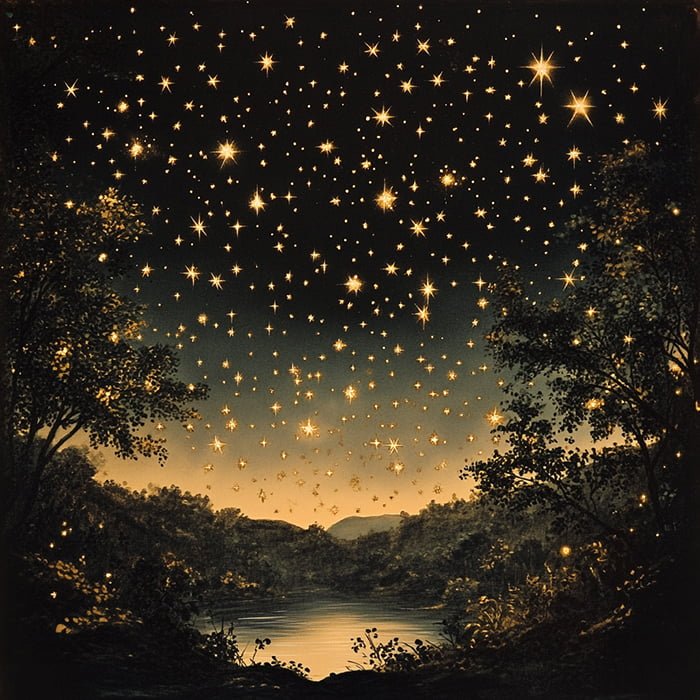
In poetry, stars are often employed to evoke emotions and explore complex themes. Their distant, ethereal nature makes them ideal symbols for expressing longing, desire, and the mysteries of the human soul. Poets use stars to draw connections between the physical and the metaphysical, linking the tangible universe with the intangible world of thought and emotion.
For example, in John Keats’ “Bright Star,” the poet yearns for the permanence of a star while grappling with the transient nature of human existence. Here, the star becomes a symbol of eternal beauty and unchanging truth, contrasting with the fleeting moments of life. Similarly, in Walt Whitman’s “When I Heard the Learn’d Astronomer,” stars represent the wonder of the universe, untainted by scientific analysis, inviting readers to embrace the awe and mystery of the cosmos.
“Stars in the Night Sky” continue to captivate the human imagination, serving as both scientific wonders and powerful symbols in literature and culture. Scientifically, they are fundamental to our understanding of the universe, from their formation in molecular clouds to their varied lifecycles. They illuminate our nights and enrich our understanding of the cosmos, acting as beacons of discovery and enlightenment.
Culturally, stars are enduring symbols of hope, guidance, and the quest for meaning. They inspire poets and writers, serving as metaphors for the human condition and the vast possibilities that lie beyond our earthly confines. The dual nature of stars as both physical entities and rich metaphors underscores their timeless allure and profound impact on human thought and creativity.
In the end, stars in the night sky remind us of our place in the universe, the interconnectedness of all things, and the endless curiosity that drives us to explore and understand the cosmos and ourselves. They are celestial companions on our journey through life, guiding us with their ancient light and encouraging us to dream, explore, and reach for the stars.

